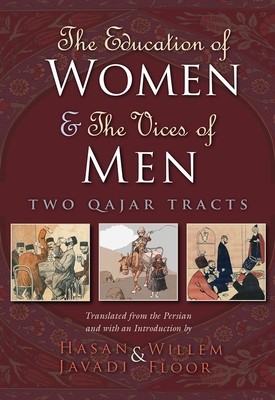
- We will send in 10–14 business days.
- Publisher: Syracuse University Press
- Pages: 176
- ISBN-10: 0815632401
- ISBN-13: 9780815632405
- Format: 14.7 x 20.8 x 2.3 cm, hardcover
- Language: English
- SAVE -10% with code: EXTRA
The Education of Women & the Vices of Men (e-book) (used book) | bookbook.eu
Reviews
Description
At the close of the nineteenth century, modern ideas of democracy and equality were slowly beginning to take hold in Iran. Exposed to European ideas about law, equality, and education, upper- and middle-class men and women increasingly questioned traditional ideas about the role of women and their place in society. In apparent response to this emerging independence of women, an anonymous author penned The Education of Women, a small booklet published in 1889. This guide, aimed at husbands as much as at wives, instructed women on how to behave toward their husbands, counseling them on proper dress, intimacy, and subservience.
One woman, Bibi Khanom Astarabadi, took up the author's challenge and wrote a refutation of the guide's arguments. An outspoken mother of seven, Astarabadi established the first school for girls in Tehranand often advocated for the rights of women. In The Vices of Men, she details the flaws of men, offering a scathing diatribe on the nature of men's behavior toward women. Astarabadi mixes the traditional florid style of the time with street Persian, slang words, and bawdy language. This new edition, the first to be translated into English, faithfully preserves the style and irreverent tone of the essays. The two texts, together with an introduction and afterword situating both within the customs, language, and social life of Iran, offer a rare candid dialogue between men and women in late nineteenth-century Persia.
EXTRA 10 % discount with code: EXTRA
The promotion ends in 16d.05:55:50
The discount code is valid when purchasing from 10 €. Discounts do not stack.
- Publisher: Syracuse University Press
- Pages: 176
- ISBN-10: 0815632401
- ISBN-13: 9780815632405
- Format: 14.7 x 20.8 x 2.3 cm, hardcover
- Language: English English
At the close of the nineteenth century, modern ideas of democracy and equality were slowly beginning to take hold in Iran. Exposed to European ideas about law, equality, and education, upper- and middle-class men and women increasingly questioned traditional ideas about the role of women and their place in society. In apparent response to this emerging independence of women, an anonymous author penned The Education of Women, a small booklet published in 1889. This guide, aimed at husbands as much as at wives, instructed women on how to behave toward their husbands, counseling them on proper dress, intimacy, and subservience.
One woman, Bibi Khanom Astarabadi, took up the author's challenge and wrote a refutation of the guide's arguments. An outspoken mother of seven, Astarabadi established the first school for girls in Tehranand often advocated for the rights of women. In The Vices of Men, she details the flaws of men, offering a scathing diatribe on the nature of men's behavior toward women. Astarabadi mixes the traditional florid style of the time with street Persian, slang words, and bawdy language. This new edition, the first to be translated into English, faithfully preserves the style and irreverent tone of the essays. The two texts, together with an introduction and afterword situating both within the customs, language, and social life of Iran, offer a rare candid dialogue between men and women in late nineteenth-century Persia.


Reviews